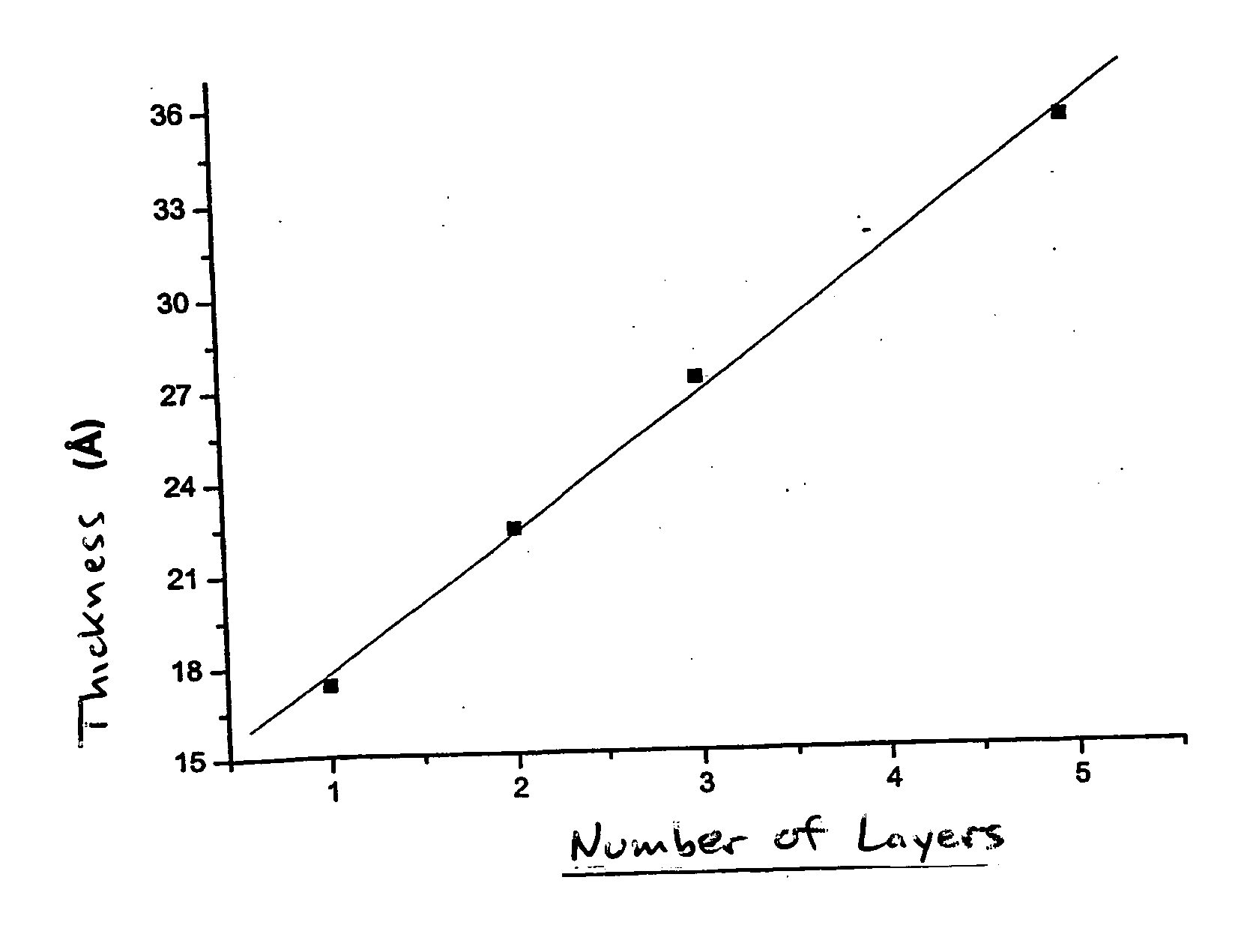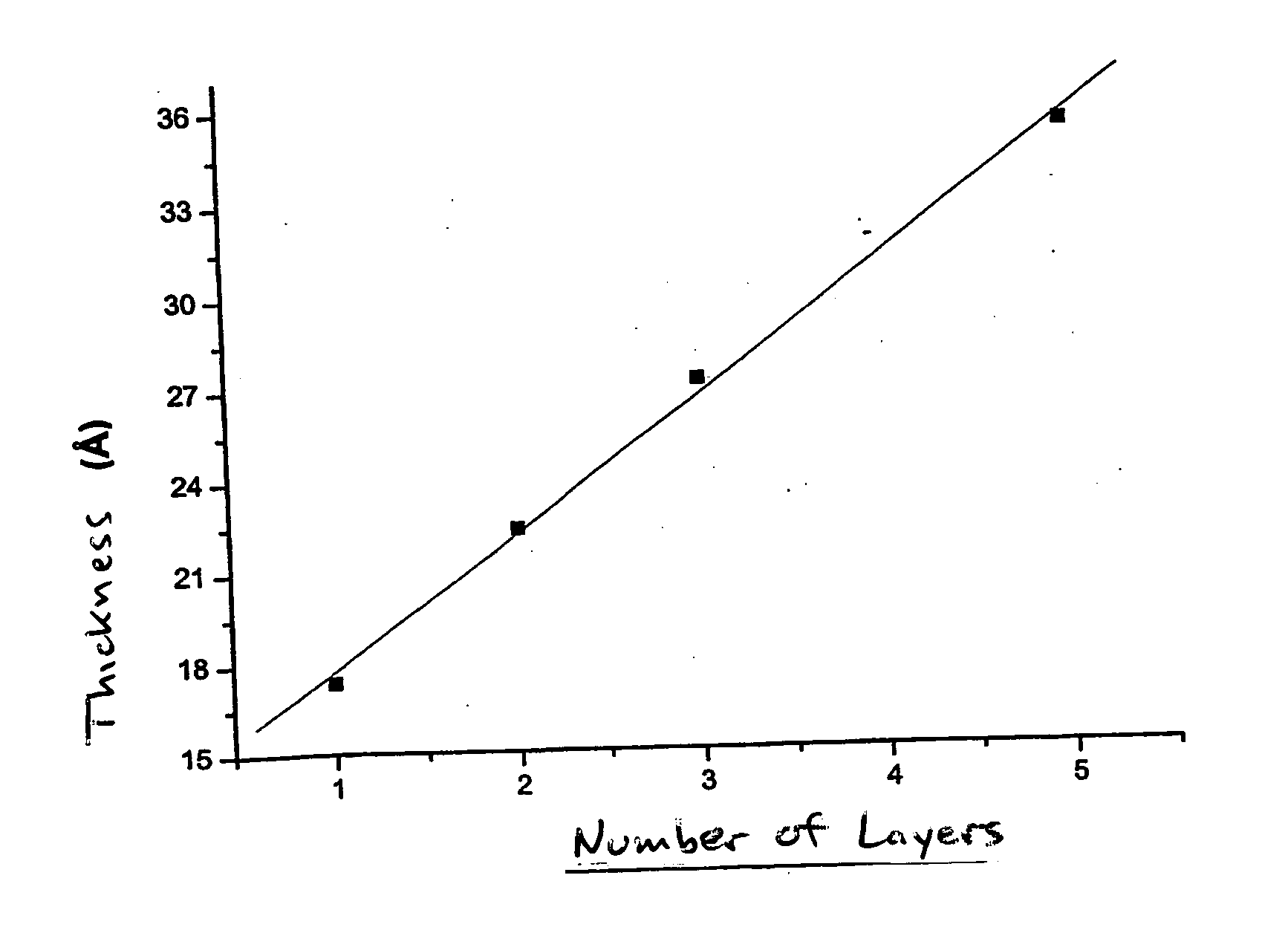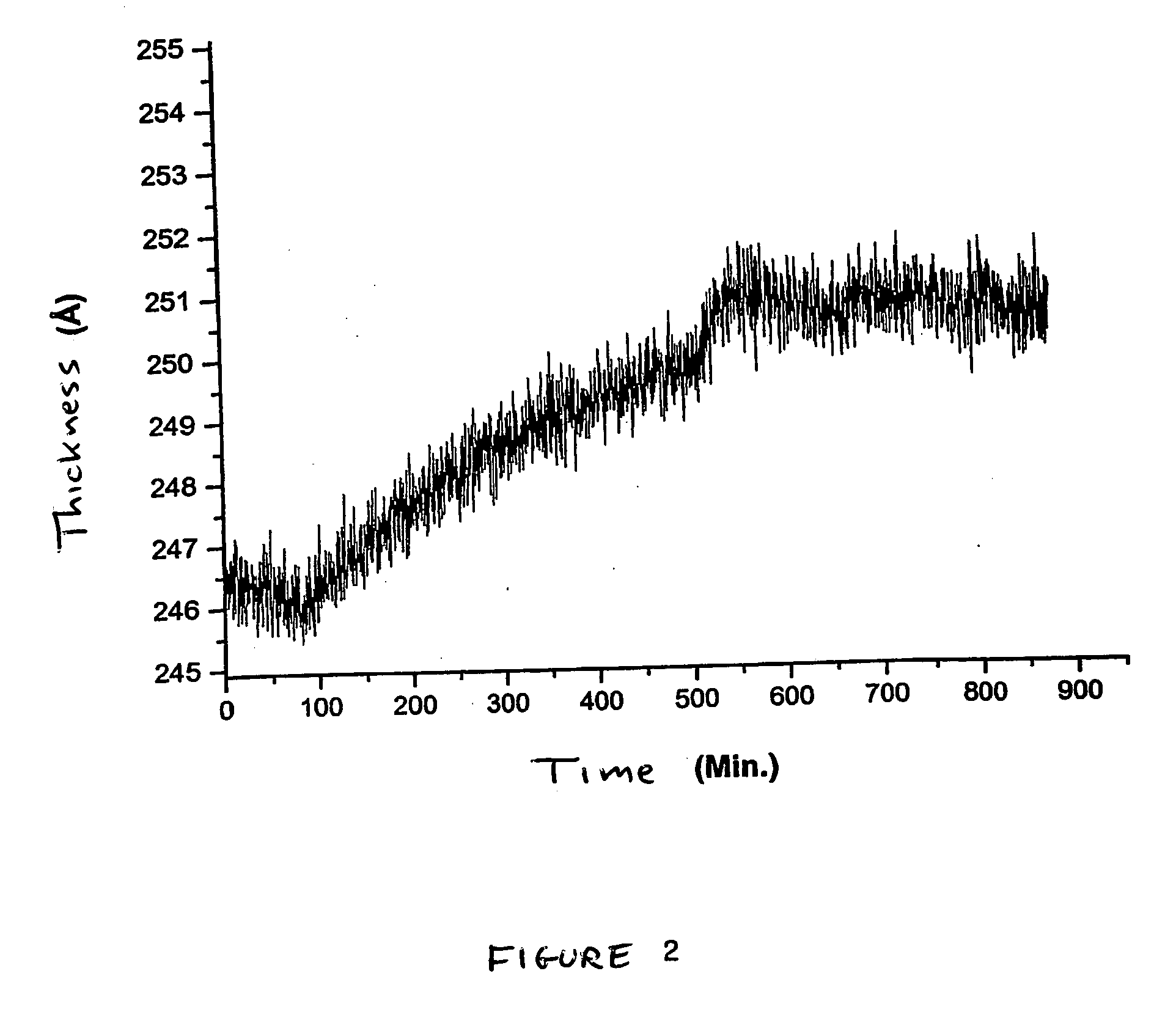Stellate prepolymers for the production of ultra-thin coatings that form hydrogels
a technology of hydrogels and prepolymers, which is applied in the direction of liquid surface applicators, pretreated surfaces, coatings, etc., can solve the problems of large economic problems, plaque and biofouling, and unwanted biological deposits on extremely large wetted surfaces,
- Summary
- Abstract
- Description
- Claims
- Application Information
AI Technical Summary
Problems solved by technology
Method used
Image
Examples
production examples
1. Six-Armed Isocyanate-Terminated Polyethers.
In every case, a commercially available isophorone diisocyanate (IPDI: 72% cis- and 28% trans-isomer) was used as the isocyanate.
The prepolymer precursors used are commercially available 6-armed polyalkylene ethers (referred to in the following as polyols) which were obtained by anionic ring-opening polymerization from ethylene oxide and / or propylene oxide using sorbitol as initiator. The polyol used was dried before use to a residual water content of less than 350 ppm. Residues of the alkali metal hydroxide used for the production of the polyols were bound by neutralization with phosphoric acid.
In all the Production Examples, the polyol was slowly added (ca. 80 ml / h) by a pump, so that the reaction temperature deviated by no more than 10 degrees K from the temperature indicated.
The molecular weight (number average) was determined by gel permeation chromatography at room temperature in three columns connected in tandem (column 1...
production example 1
The polyol used is a 6-armed statistical poly(ethylene / propylene oxide) with an EO:PO ratio of 80:20 and a molecular weight of 3,100 g / mol. Before the reaction, 0.05% by weight phosphoric acid was added to the polyol, followed by heating with stirring for 1 h in vacuo to a temperature of 80° C.
262 g IPDI (1.18 mol) were introduced into a reactor and heated to 50° C. in an inert gas atmosphere. The dried and degassed polyol (50 g, 0.016 mol) was then slowly added (ca. 80 ml / h) with intensive stirring by means of a peristaltic pump. After the addition, the reaction mixture was stirred for another 60 hours at 50° C. Using a thin-layer distillation apparatus, excess IPDI was completely distilled off at 130° C. / 0.025 mbar pressure.
production example 2
The polyol used corresponds to the polyol of Production Example 1.
210 g IPDI (0.94 mol) and 0.06 g (0.1% by weight) diazabicyclo-octane (DABCO) were introduced into a reactor and heated to 50° C. in an inert gas atmosphere. The dried and degassed polyol (58 g, 0.019 mol) was then slowly added (ca. 80 ml / h) with intensive stirring by means of a peristaltic pump. After the addition, the reaction mixture was stirred for another 60 hours at 50° C. Using a thin-layer distillation apparatus, excess IPDI was completely distilled off at 130° C. / 0.025 mbar pressure.
PUM
| Property | Measurement | Unit |
|---|---|---|
| thickness | aaaaa | aaaaa |
| concentration | aaaaa | aaaaa |
| thickness | aaaaa | aaaaa |
Abstract
Description
Claims
Application Information
 Login to View More
Login to View More - Generate Ideas
- Intellectual Property
- Life Sciences
- Materials
- Tech Scout
- Unparalleled Data Quality
- Higher Quality Content
- 60% Fewer Hallucinations
Browse by: Latest US Patents, China's latest patents, Technical Efficacy Thesaurus, Application Domain, Technology Topic, Popular Technical Reports.
© 2025 PatSnap. All rights reserved.Legal|Privacy policy|Modern Slavery Act Transparency Statement|Sitemap|About US| Contact US: help@patsnap.com



